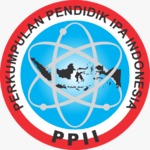Studi Pengaruh pH Terhadap Stabilitas Warna dan Kuat Tarik Kain Katun dengan Pewarna Alami Antosianin
DOI:
https://doi.org/10.29408/kpj.v9i1.29595Keywords:
Elastic modulus, fading, tensile strengthAbstract
Lombok has become one of the leading tourist destinations, especially with the development of the Mandalika Special Economic Zone. One of the cultural products that has the potential to be offered to tourists is Lombok traditional weaving. The study aims to analyze the effect of the pH of the dye solution on the characteristics of the dyed fabric. The research method uses a mechanical thermal method to obtain anthocyanin powder extraction, standard staining methods namely mordan, staining, and fixation, as well as characterization using tensilons, Color Analyzer software, Hooloovoo, and Encycolorpedi website. The extraction of anthocyanin compounds from teak leaves (Tectona grandis) was successfully carried out by mechanical thermal method. Color analysis and identified color changes are significantly affected by differences in solution pH. The higher the pH used, the darker the color will be produced and the higher the level of color fading in the fabric. The smallest E value is at pH 6 =5.364 and the largest E value is at pH 14 = 17.145. However, an increase in pH tends to increase the tensile strength of the fabric. However, the optimum tensile strength condition was obtained in a solution of pH 12, which was 17.414 MPa, while at pH 13 and pH 14, the tensile strength of the fabric decreased to 16.071 MPa. Based on the analysis of the influence of pH of dye solution on fabric tensile strength, it was identified that a 6th-order polynomial model (determination coefficient R2 = 0.9479) was identified as accurate enough to model the influence of pH on fabric tensile strength. Therefore, this finding has potential in the textile industry, especially in increasing the economic value of Lombok weaving.
References
Ambarwaningthyas, S., Salis, W. A., & Mulyani, Rr. W. E. (2024). Optimalisasi pH Dengan Campuran Alkali Na2CO3-NaOH Pada Pencelupan Kapas Dengan Zat Warna Reaktif Panas. Texere, 22(1), 48–55. https://doi.org/10.53298/texere.v22i1.05
Arsyad, M., & Kondo, Y. (2020). Efek Perlakuan Natrium Hidroksida Terhadap Kekuatan Tarik Komposit Serat Sabut Kelapa. Prosiding 4th Seminar Nasional Penelitian & Pengabdian Kepada Masyarakat. https://cropstechnology.wordpress.com/category/biopolymer/
Ayun, Q., Khomsiyah, & Ajeng, A. (2022). Pengaruh pH Larutan Terhadap Kestabilan Warna Senyawa Antosianin Yang Terdapat Pada Ekstrak Kulit Buah Naga (Hylocereus costaricensis). Jurnal Crystal : Publikasi Penelitian Kimia Dan Terapannya, 4(1), 1–36. https://doi.org/10.365xx/jc.vxxxxxxx
Djaafar, T. F., Marwati, T., Indrasari, S. D., Hatmi, R. U., Siswanto, N., Purwaningsih, P., Ambarsari, I., & Supriyadi, S. (2022). Mutu Fisik Buah Salak Pondoh (Salacca edulis Reinw): Pengaruh Pelilinan dan Pengemasan Menggunakan Kantong Plastik Low Density Polyethylene. AgriTECH, 42(2), 113. https://doi.org/10.22146/agritech.55376
Kurniawidi, D. W., Ardianto, T., Alaa’, S., Alhadi, K., Dewi, D. L., S., RR. D., & Rahayu, S. (2024). Pemanfaatan Daun Jati Dan Daun Mangga Sebagai Sumber Pewarna Alami Untuk Kain Pada Pengrajin Tenun Lombok Berbasis Green Teknologi. Jurnal Abdi Insani, 11(1), 490–497. https://doi.org/10.29303/abdiinsani.v11i1.1372
Kurniawidi, D. W., Dewi, D. L., Rahayu, S., Budianto, A., & Alaa, S. (2023). Characteristics of Dyeing Cotton Thread Using Fine Particle Powder from Tectona Grandis Leaf. Jurnal Penelitian Pendidikan IPA, 9(10), 8173–8179. https://doi.org/10.29303/jppipa.v9i10.3753
Perdani, A. W. (2023). Mini Review: Ekstraksi Antosianin Sebagai Pewarna Makanan Dengan Bantuan Ultrasonik Dan Purifikasi Dengan Sephadex. Prosiding Pendidikan Teknik Boga Busana, 18(1).
Qomariah, U. K. N., Bashiroh, V. A., & Chusnah, M. (2022). Ekspresi Warna Ecoprint Daun Jati (Tectona grandis) Pada Katun Primissima dengan Mordan Tawas, Tunjung dan Kapur. AGROSAINTIFIKA, 5(1), 17–23. https://doi.org/10.32764/agrosaintifika.v5i1.2972
Rahayu, S., Kurniawidi, D. W., Hudha, L. S., & Alaa, S. (2021). New techniques for improving the quality of cotton yarn using natural dyes from teak leaves (Tectona grandis), ketapang leaves (Terminalia catappa), and tender skin (Lannea coromandelica). IOP Conference Series: Earth and Environmental Science, 637(1). https://doi.org/10.1088/1755-1315/637/1/012084
Widian, O. A., Widayatno, T., & Haerudin, A. (2022). Pengaruh Jenis Dan Konsentrasi Zat Fiksasi Pada Ekstrak Daun Mangga Dalam Pewarnaan Kain Batik. Jurnal Tengkawang, 12(1), 76–85. https://doi.org/http://dx.doi.org/10.26418/jt.v12i1.53613
Yang, L., Wang, S., Zhang, H., Du, C., Li, S., & Yang, J. (2022). Effects of black soybean powder particle size on the characteristics of mixed powder and wheat flour dough. LWT, 167, 113834. https://doi.org/10.1016/j.lwt.2022.113834
Downloads
Published
Issue
Section
License
Copyright (c) 2025 Kappa Journal

This work is licensed under a Creative Commons Attribution-ShareAlike 4.0 International License.
Semua tulisan pada jurnal ini menjadi tanggungjawab penuh penulis. Jurnal Kappa memberikan akses terbuka terhadap siapapun agar informasi dan temuan pada artikel tersebut bermanfaat bagi semua orang. Jurnal Kappa dapat diakses dan diunduh secara gratis, tanpa dipungut biaya, sesuai dengan lisensi creative commons yang digunakan








